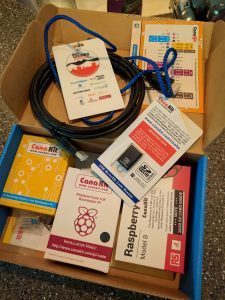The Offensive Security Certified Professional (OSCP) exam is known for being one of the most challenging certification exams in the cybersecurity field. It’s a hands-on test of your ability to identify and exploit vulnerabilities in a live, virtual environment.
The exam is not for the faint of heart. It requires a significant amount of time and effort to prepare, and even experienced security professionals may find it difficult to pass. In fact, the pass rate for the OSCP exam is typically less than 50%.
So, what makes the OSCP exam so challenging? For starters, it’s an extremely hands-on exam. Rather than simply testing your knowledge of security concepts, it requires you to actually demonstrate your skills by completing a series of real-world challenges. This means you need to have a strong foundation in security principles and a practical understanding of how to identify and exploit vulnerabilities.
In addition, the exam is time-limited. You have just 24 hours to complete the challenges and submit your results. This means you need to be able to work quickly and efficiently under pressure.
So, how can you prepare for the OSCP exam and improve your chances of passing? Here are a few tips:
- Take the OSCP training course. The OSCP exam is designed to test the skills and knowledge you gain from the Offensive Security Penetration Testing with Kali Linux (PwK) course. This course provides a comprehensive introduction to the tools and techniques used by professional penetration testers, and is an essential foundation for anyone looking to take the OSCP exam.
- Practice, practice, practice. The best way to prepare for the OSCP exam is to get hands-on experience with the tools and techniques you’ll be tested on. This means setting up your own lab environment and practicing your skills on a regular basis.
- Work through the lab challenges. The OSCP exam includes a series of lab challenges that test your ability to identify and exploit vulnerabilities in a live, virtual environment. Completing these challenges will give you a good idea of the types of tasks you’ll be expected to perform during the exam, and can help you develop the skills and confidence you need to succeed.
- Get support from the community. The OSCP exam can be a daunting and isolating experience, but you don’t have to go it alone. There are many online communities and forums where you can connect with other OSCP exam takers and get support, advice, and encouragement.
Overall, the OSCP exam is a challenging but rewarding experience. By preparing thoroughly and staying focused, you can increase your chances of success and earn one of the most respected certifications in the cybersecurity field.
—–
This entire blog post was created by artificial intelligence. Text by ChatGPT. Photo by Midjourney.




 I wasn’t disappointed. I ended up spending most of my time in the “Lockpick Village” and working on the Capture The Flag competition.
I wasn’t disappointed. I ended up spending most of my time in the “Lockpick Village” and working on the Capture The Flag competition. I ventured into the Capture The Flag contest after that, where I was able to put into practice all of the penetration testing skills I’ve been working diligently on since January. The Penetration Testing with Kali Linux course I’m enrolled in helped too.
I ventured into the Capture The Flag contest after that, where I was able to put into practice all of the penetration testing skills I’ve been working diligently on since January. The Penetration Testing with Kali Linux course I’m enrolled in helped too.


 Lastly, we have another Alfa device, both of which get really good reviews for Kali Linux in particular. At only $6 more than the AWUS051NH, the
Lastly, we have another Alfa device, both of which get really good reviews for Kali Linux in particular. At only $6 more than the AWUS051NH, the